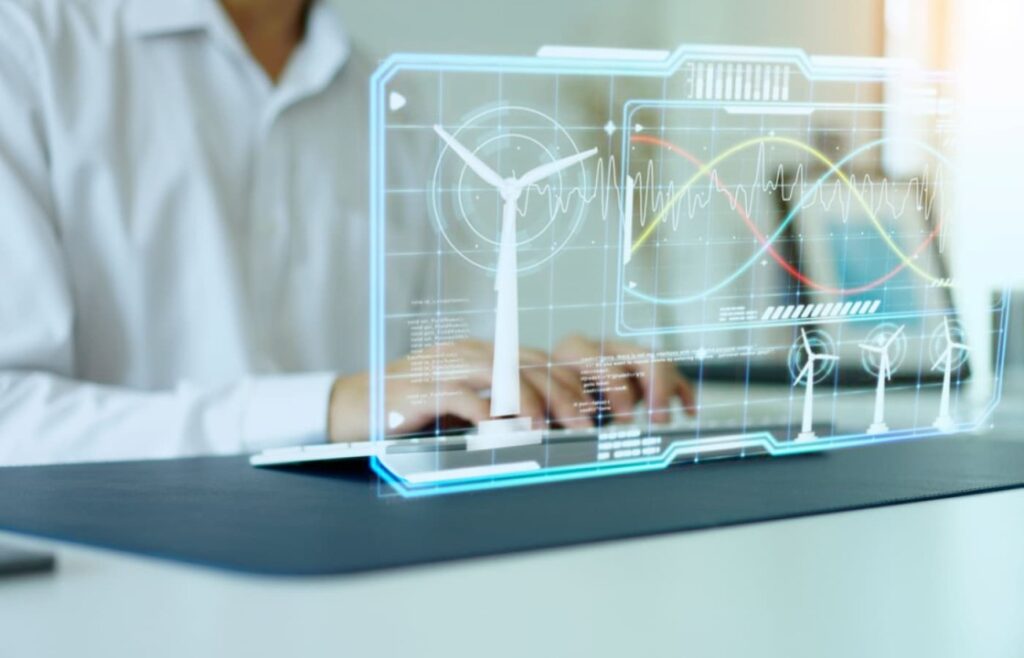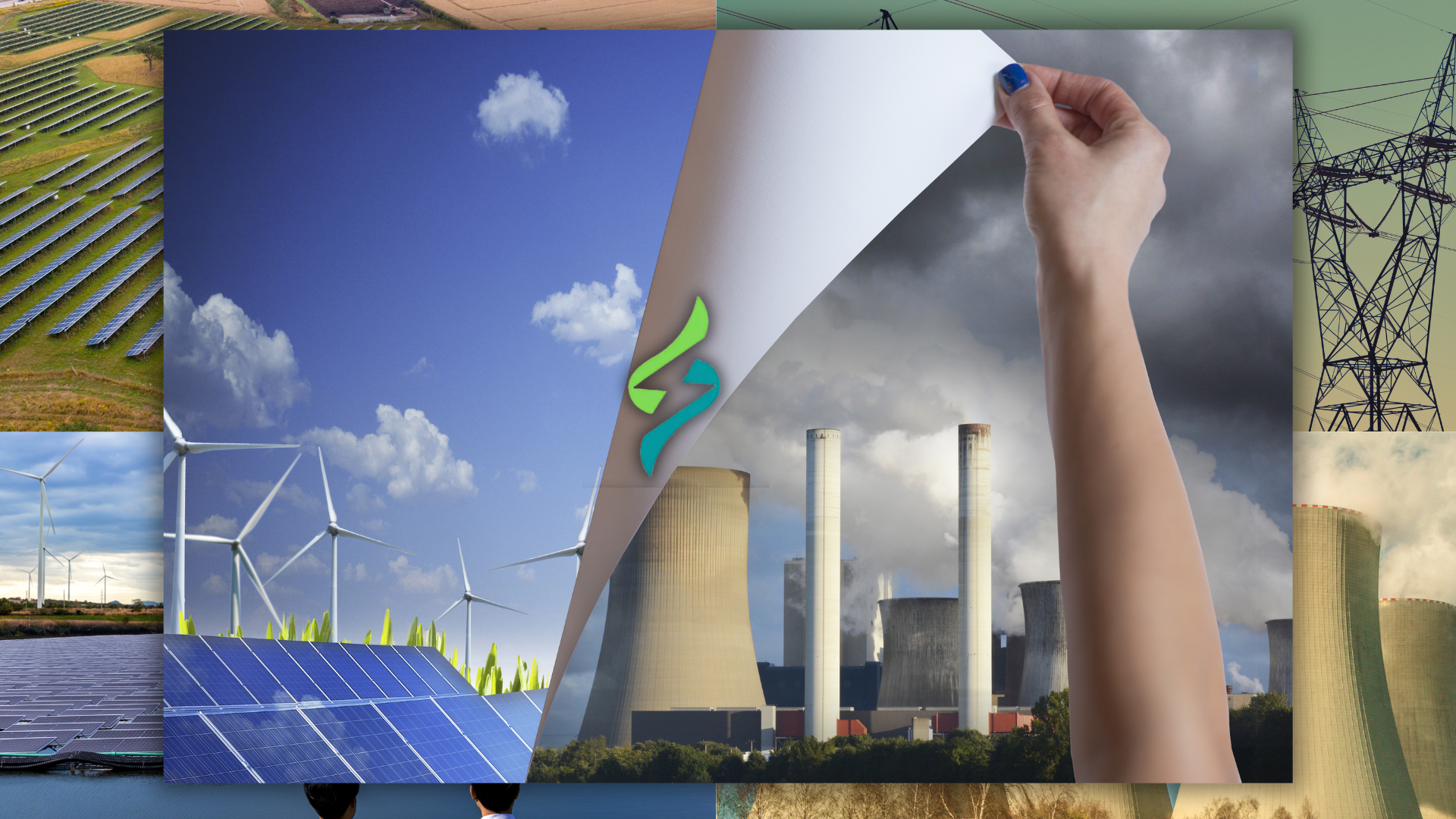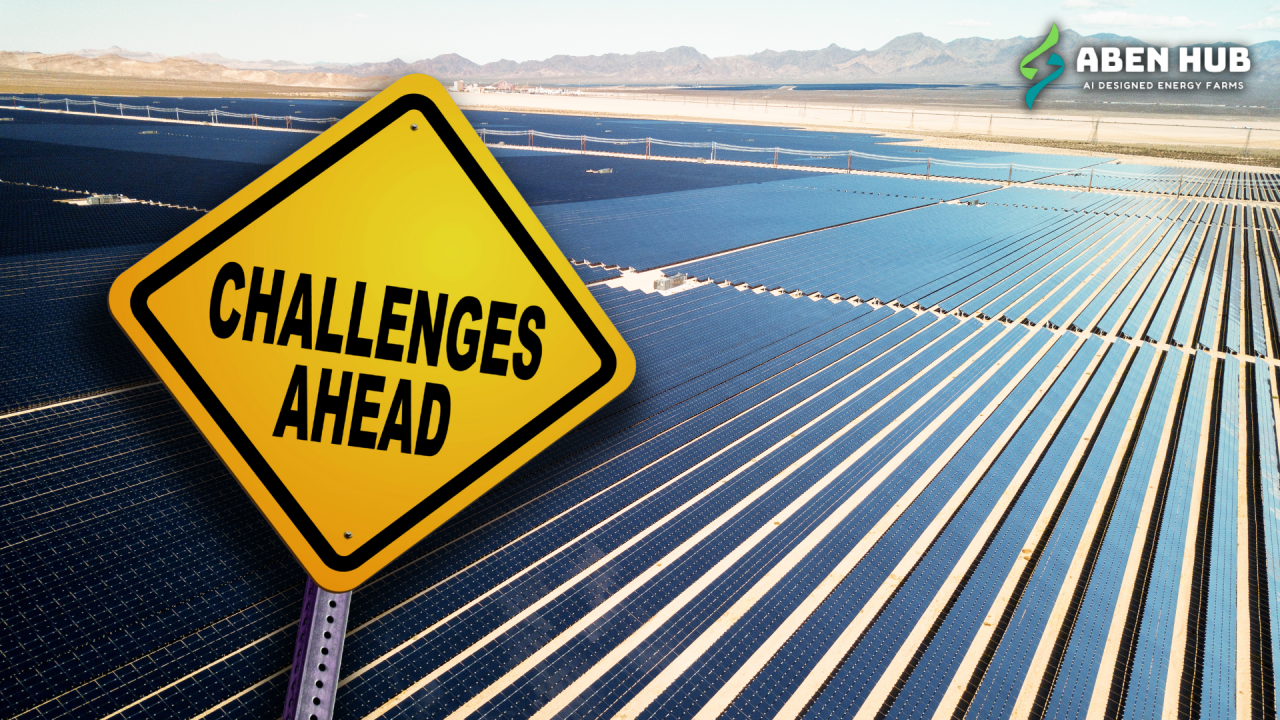ARTICLE BY NEIL SAHOTA PUBLISHED OCTOBER 3rd 2023 ON: https://www.linkedin.com/pulse/ai-renewable-energy-powering-up-greener-tomorrow-neil-sahota/
The increasing global demand for energy underscores the importance of efficiently managing renewable resources. Yet, the unpredictability of these sources often leads to wasteful energy consumption.
Instances of excessive solar or wind power, without corresponding grid adjustments, cause conventional sources to overproduce, thus driving up costs for consumers and unnecessary CO2 emissions.
Maintaining the right balance between supply and demand is no small task. This is precisely where artificial intelligence (AI)steps in, proving its significance by optimizing sustainable energy generation and resource allocation.
The numbers highlight the enthusiasm of energy corporations for AI in renewable energy. Projections suggest that the worldwide AI market for clean energy will exceed $75.82 billion by 2030. This projection reflects an impressive annual growth rate of 27.9%.
In this article, we will explore the advantages of AI in the renewable energy sector and its diverse applications across industry operations.
What is Renewable Energy?
Renewable energy or clean energy refers to energy produced from renewable sources that emit no emissions, stored through efficient energy practices.
Clean energy originates from continuously replenished sources, like solar energy, bioenergy, biomass, hydropower, and wind energy.
The main objective of adopting renewable energy is to address climate change. Using clean energy sources offers environmental and economic advantages. For example, it generates emissions-free energy, reducing greenhouse gases and air pollutants commonly produced by fossil fuels.
Defining AI’s Role in Renewable Energy
Artificial Intelligence (AI) is pivotal in modern energy systems, proactively detecting faults to prevent failures and mitigate risks. As power demands increase, AI offers essential solutions through precise forecasting, coordination, and efficient supply management.
The global transition to low-carbon energy is accelerating, with renewable capacity now surpassing fossil fuels and nuclear power. This shift involves establishing energy storage, intricate renewable networks, and AI-driven smart consumption tools, transforming how consumers interact with energy. Decentralized power grids use historical data to balance energy inputs and outputs.
Ensuring the longevity of power infrastructure, operating for 30 to 40 years, is critical for modern networks. Aging systems, coupled with private sector renewable growth, pose global energy distribution challenges.
The US Department of Energy‘s support for the smart grid infrastructure elevates AI to the system’s cognitive center, gathering, integrating, and analyzing data for informed energy allocation decisions.
Energy software providers excel in crafting and applying AI and machine learning(ML) solutions to energy projects. Use cases range from renewable tech marketing to predictive analytics.
What are the Benefits of AI in Renewable Energy?
Although integrating AI into mitigating climate change and transitioning to clean energy may come with difficulties, the potential benefits outweigh the costs.
Now, let’s explore the notable advantages that AI brings to the clean energy:
1. Exploration and Planning
AI sifts through extensive satellite and sensor data to pinpoint prime locations for renewables: solar and wind farms, geothermal plants, and hydroelectric dams. It forecasts project viability by considering weather, land use, and resource availability, it forecasts project viability, aiding smart investment decisions.
It refines site selection and design for hydroelectric and geothermal installations through precise models. Additionally, it optimizes the arrangement of green energy setups like solar panels and wind turbines for maximum energy output.
2. Decreased Carbon Emissions
AI’s part in the energy industry enables precise energy supply matching the demand in specific locations and times. This reduces excess energy production, thus lowering carbon emissions.
Additionally, AI aids in forecasting periods with abundant renewable energy, such as sunny or windy days. This enhances production planning, promoting the use of sustainable energy sources. Consequently, the carbon footprint diminishes significantly.
3. Optimized Performance
Efficient performance optimization is essential for reducing the environmental impact of energy-intensive systems, with clean-energy systems being prime beneficiaries. AI is vital in making electric vehicles (EVs) more intelligent. It helps determine the best routes, manages energy consumption, and schedules charging based on electricity costs and availability.
Solar panels, wind turbines, and geothermal power plants also gain efficiency through AI adjustments. Moreover, AI enhances nuclear and hydroelectric power plants by regulating coolant and water flow, ensuring both performance and environmental sustainability. This comprehensive approach minimizes energy waste and environmental impact in diverse clean-energy systems.
4. Energy Production Forecasting
Energy production forecasting is crucial for seamless energy transitions, helping firms plan future clean energy availability and investments. Precise forecasting reduces expenses and downtime, balancing clean energy production. AI leverages weather data, satellite imagery, and sensors for performance predictions.
It enhances reliability through real-time monitoring and preventive maintenance, minimizing downtime and optimizing clean energy capacity. Overall, AI elevates forecasting precision, enabling informed energy transition strategies.
5. Waste Management and Recycling
Artificial intelligence is commonly applied to forecast the expected operational duration of renewable energy setups and enhance the scheduling of their dismantling and reuse. It is crucial to fine-tune the recycling procedures for components within clean energy systems, including solar panels, wind turbines, and hydroelectric dams.
It does this by identifying valuable materials within these systems, thereby aiding in selecting the most suitable recycling methods. Moreover, AI contributes to developing efficient strategies for safely storing and disposing of nuclear waste.
6. Energy Storage
The energy storage market is poised for exponential growth, predicted to expand twentyfold by 2030. Smart energy storage systems, a pivotal part of this growth, seamlessly integrate into the energy grid, streamlining energy management.
Furthermore, energy storage is empowering the creation of virtual power plants. These plants enable energy providers to deliver power precisely when required, bridging supply shortfalls. This innovative approach diminishes the necessity for constructing new power plants.
Real-Life Applications of AI in Renewable Energy
As sustainable energy sources like sunlight, water, and wind grow in usage and capacity, they present a challenge to outdated power grids designed for one-way power flow – from power plants through transmission lines to end-users.
Recent advancements in AI and fast computing enable energy companies and utilities to seamlessly balance power generation and consumption while managing dispersed energy sources. All of this contributes to reducing consumer costs on a monthly basis.
As a result, numerous renowned energy companies worldwide have embraced artificial intelligence to enhance their operations.
The application of AI in specific sectors like wind and solar energy, as well as microgrid management, showcases remarkable advancements that are reshaping the renewable energy landscape.
Harnessing AI for Wind Energy
Wind energy faces akin weather-related obstacles as solar power. However, promising advancements have already been made in predicting wind turbine power generation. For instance, Australia boasts an 80% accuracy rate in year-long power forecasts.
British AI firm DeepMind also excels in accurately forecasting turbine performance 36 hours in advance using weather data and turbine information. This elevated energy value up to 20%.
AI Advancements in Solar Energy
AI has significantly aided solar energy production, particularly in weather forecasting. Accurate predictions enhance grid supply planning, which is crucial for grid operators.
The US Department of Energy joined forces with IBM to develop Watt-Sun, an ML technology primarily focused on analyzing extensive weather data. Its primary objective is minimizing uncertainties in solar energy production and lowering energy storage and management expenses. Watt-Sun has enhanced forecasting accuracy by up to 30%, effectively managing sunlight fluctuations.
Meanwhile, the UK’s National Grid Electricity System Operator (ESO) is evaluating a non-profit organization, Open Climate Fix’s AI models to forecast near-term solar power generation. These models use extensive satellite and data sources to provide highly accurate weather forecasts. This precision greatly enhances ESO’s renewable electricity production planning and reduces dependence on fossil fuel reserves.
Microgrids and AI Integration
AI has also found its way into microgrids, significantly improving energy distribution efficiency. Companies like BluWave AI and Sustainable Power Systems have come together to confront the challenges posed by the unpredictable nature of electricity supply and demand.
By leveraging AI to analyze current flows, grid operators can make informed decisions about energy storage, distribution, or exchange sales.
This, in turn, enhances overall energy efficiency. The benefits of AI in microgrids extend far beyond solar energy, encompassing a broader spectrum of energy sources.
AI Solutions for Modern Challenges in the Energy Sector
The contemporary energy industry, comprising numerous public and private entities, is presently grappling with various difficulties.
Here, we’ll examine some of these issues and explore how AI can offer remedies:
Carbon Emissions
Recent data from the International Energy Agency shows a historic peak in global CO2 emissions, growing by 6% annually. The surge is attributed in part to heightened energy demands.
While no universal remedy exists for reducing emissions, AI can aid in devising cleaner production methods, bolstering monitoring of fossil fuels, and crafting targeted emission reduction strategies.
Centralization Woes
The energy sector increasingly relies on major centralized grids and providers, presenting sustainability challenges. A promising approach is the creation of interconnected, smaller energy grid networks powered by AI.
This strategy reduces dependence on central utilities, enabling real-time supply balancing and long-term power resource stability.
Renewable Transition
Despite varying projections, the share of renewables in power generation is predicted to rise to 44% by 2050. Ensuring a seamless transition is pivotal with the growing adoption of solar and onshore wind technologies.
AI aids by constantly monitoring power grids, accurately predicting power fluctuations, and formulating strategies for harnessing geothermal energy.
However, it is crucial to note that applying AI alone won’t be a cure-all for all these issues. Meaningful progress necessitates a holistic approach that includes integration with ML and data science initiatives for more concrete and effective results.
AI in Renewable Energy: Key Takeaways
The ever-growing global energy demand underscores the urgent need for efficient management of renewable resources.
The inherent unpredictability of renewables often results in energy wastage and grid-related challenges. Here, AI emerges as a top of mind solution, optimizing the generation and allocation of sustainable energy.
AI’s adaptability brings significant benefits to the renewable energy sector, including:
Exploration and planning,
Emission reduction,
Performance optimization,
Energy production forecasting,
Waste management and recycling,
Energy storage.
Real-world applications in wind, solar, and microgrids illustrate AI’s tangible contributions.
Nonetheless, it is crucial to emphasize that AI is not a standalone solution. Achieving lasting results requires a comprehensive approach, integrating AI, machine learning, and data science.
The synergy between AI and renewable energy holds promise for a greener, more sustainable energy future.
For more thought-provoking content, subscribe to Neil’s newsletter!





